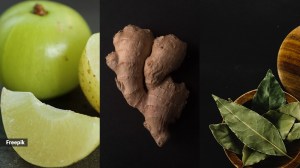Amla paints first strokes in brown for Rainbow team
Long lost somewhere in South African cricket’s black and white debate has been the plight of the browns. Finally, after the drought, it...

Long lost somewhere in South African cricket’s black and white debate has been the plight of the browns. Finally, after the drought, it’s pouring good news for the Indian community: Hashim Amla’s historic inclusion in the national team for the tour to India is followed by former national u-19 captain Imran Khan — also of Indian origin — being named in the national squad for the Hong Kong Sixes Series.
Reason enough for the Asian population in Gauteng and Natal provinces to celebrate, though they haven’t forgotten the years of neglect. ‘‘Hashim was in contention for the 2003 World Cup too’’, says Cassim Docrat, CEO of Natal Cricket with his roots in Pakistan. ‘‘Strange selection policies meant he took so long to make it to the national team like other people of Indian origin before.’’
For an outsider — especially from India — the South African selection process has long been a mystery. While Chennai-born Nasser Hussain can lead England and the names of Ramnaresh Sarwan and Shivnaraine Chanderpaul will be discussed when Brian Lara steps down, the Rainbow team was inexplicably minus brown till Hashim surfaced.
At the World Cup last year, a Durban-based cricket fan of South Indian origin summed it up succinctly for this writer. ‘‘In the past we were not white enough and now we are not black enough,’’ he said, hinting darkly at the ‘‘conspiracy’’ against the hugely talented Amlas, Hashim and his brother Ahmed.
Docrat doesn’t subscribe in toto to this but instead offers his own. ‘‘Despite their multi-ethnic spectrum, the national selectors have adopted a ‘closed shop’ policy. Old timers on a poor run are not being touched and blooding youngsters has become a rarity,’’ he says.
So how did Hashim make it to the big leap? ‘‘Considering the runs he has scored, Hashim was impossible to avoid’’, says Docrat. ‘‘There would have been a huge backlash if Hashim wasn’t picked.’’
Four centuries in the domestic league at an average of around 90, a spectacular junior record and runs against international teams at home and abroad…It seems Hashim almost broke the door down after his repeated knocks failed to get him a place in the national side. It’s a thin line between in and out, Docrat maintains. ‘‘A few hundreds less would have meant another disappointment for Hashim.’’
The player himself, of course, is silent on what he and his ilk have gone through. Ask Hashim how Indians in South Africa could never match Hussain, Sarwan or Chanderpaul and he laughs out loud and softly says, ‘‘I don’t know.’’
Docrat is optimistic, though, that things will change. He predicts that Imran will certainly follow Hashim into the team very soon and a couple more from among the eight to 10 Indians in the two Natal sides have the potential to make it.
Certainly, Indians are making their mark at the province level. The Natal side has a strong presence, made up mostly of descendants of those who landed at Durban port via the Arabian Sea a couple of centuries ago.
Hashim, at 21, leads the provincial side that includes South African cricket greats Shaun Pollock, Jonty Rhodes and Lance Klusener. And lesser known people like Ashraff Mall, Gobind Raj, Tyron Pillay.
Enough to fuel optimism in the community. At a warm-up match between the Natal Dolphins and the Indian team before the World Cup, the Amla brothers put on a good partnership. Prompting this comment from a journalist: ‘‘That’s the future of cricket in South Africa. There are just two South Africans on the field and they are umpires.’’
Even a gentler transition will do. The Amla brothers have led the way.
Photos


- 01
- 02
- 03
- 04
- 05




























